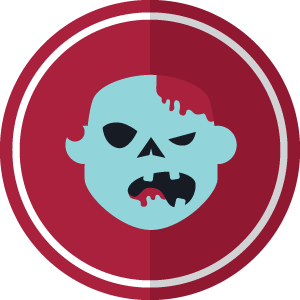This two part series analyses some of the most common leaks found in games of players at different levels. Part One looks into the blinds play, playing against c-bets lack of aggression as well as inefficient use of HUD. All these leaks can seriously impact our bottom line if they are not recognized and dealt with timely and appropriately.
During my

time as a poker coach I have worked with hundreds of students. As a result certain patterns start to form in terms of how the average player is leaking money. Here is a list of the most common areas in my 6max NLHE students.
Blinds Play
It possibly doesn't come as a surprise that this is at the top of the list. It's there for a reason – defending blinds correctly can be tough.
Probably the most common leak is
defending the big-blind too tight. Many players are still stuck with the mentality that the big-blind should be defended very tightly. If we check our overall BB cold-call using tracking software it should be around 26%. It's common for me to see values ranging from 10-20%. If we check specifically vs a BTN open we should be cold-calling about 31% of hands, whereas BB vs SB should be at least 35% cold-call potentially higher.
This isn't the only area where we can leak money however. If we check our winrate from the blinds it should be around -30bb/100 in the BB and -15bb/100 in the SB. It's very common to see a BB winrate lower than -40bb/100.
The first step is making sure our preflop ranges are decent, but sometimes players even lose considerable amounts of money despite the fact that their preflop ranges are solid. There are further issues that can arise postflop.
Playing vs Cbets
While this is especially an issue when defending from the blinds, it's also an issue in any spot where we are the cold-caller. players are often either folding too much to cbets or defending too passively when they do defend. It's not a huge deal if our fold-to-cbet when OOP in the BB is over 40% but it certainly doesn't want to be over 50%. In position when defending we should fold to cbets less than 40% of the time on average.
It's not enough to just get our fold-to-cbet values to an acceptable percentage though. If we defend our entire range by calling it may not end up being an especially profitable strategy. Overall we should be raising about 15% of the time vs our opponent's flop cbet. It's common to see values below 10% sometimes even below 5%.
Even players that do raise with an appropriate frequency often end up raising the wrong type of boards/hands. Generally speaking we shouldn't have much of a raising range on dry textures by default. So naturally if our raising range on a bone-dry texture is 0% our raising range on drawier textures will be significantly above 15%.
Lack of 3bet Aggression
Optimal value

for 3bet frequency is somewhere between 7-10%. The average value I see is somewhere between 3-6%. It doesn't take long to a run a “3bet=true” filter in our tracking software to see how immensely profitable 3betting is in general. Most players should 3bet more, especially in position.
A common argument I hear is “Shouldn't we flat more in position so we can utilise our positional advantage?”. There is nothing wrong with this argument, it is completely true. We should cold-call more, but not at the expense of our 3betting frequency. In other words we should both cold-call more and 3bet more when we have a positional advantage.
As a rough guide for positional 3bet frequencies –->
- MP 4%
- CO 6%
- BTN 8-10%
- SB 8%
- BB 8%
While 3betting out of position from the blinds can be complex and require a decent amount of work, 3betting more aggressively in position is a relatively easy way to give winrate a significant boost.
Cbetting/Barreling
The majority of players are folding too much to cbets. The easy way to exploit this is simply to cbet more. If we were attempting to play a balanced strategy we'd probably cbet around 55% or so. As an exploitative measure it's recommended to cbet somewhere between 65-70% in most games.
The average cbet stat is somewhere around the 50% mark which is often too passive. It doesn't take a long time to run a “cbet = true” filter to see how much automatic profit we are making in situations where we decide to cbet the flop.
As a rough guide for cbet frequencies per street –-->
- Flop – 65%
- Turn – 52%
- River – 44%
It's common to see players who have a river cbet frequency which is higher than their turn cbetting frequency. This is generally an indication that they are two-barreling too tight and hence reaching the river with a stronger range than they should.
It's also common to see river cbet frequencies below 30% which likely indicate the player is playing a very value-oriented strategy on the river and not 3barrel bluffing a lot. It's recommended to run a “3barrel=true” filter in your tracking software. You may be surprised at how much money is generated with your non-showdown winnings even if you feel you are playing at sites where there is no fold-equity.
Inefficient use of HUD
I've lost count of the times where I've asked a student for a basic
HUD stat and then spent the next 2-3 minutes watching them go through various popups trying to locate the stat. There are also many situations where I've asked a student to walk me through their HUD layout and observed huge pauses while the student attempts to remember what a certain stat on their main HUD is.
These are tell-tale signs that no matter how amazing the student's HUD is, they don't make regular use of it.
A HUD is an extremely powerful tool, especially when we have a decent sample size. We can get a huge edge from understanding when we should deviate from a standard line based on our opponents tendencies. For many a HUD is simply colorful numbers which make their poker tables look cooler but are of no real additional benefit.
If there are any
numbers on your HUD that you don't make use of, ask yourself why they are there. Would you benefit from having a different stat in its place? Are there any game situations where you wish you'd had a certain stat but don't?
Your HUD is an awesome tool. Make sure you use it.
 time as a poker coach I have worked with hundreds of students. As a result certain patterns start to form in terms of how the average player is leaking money. Here is a list of the most common areas in my 6max NLHE students.
time as a poker coach I have worked with hundreds of students. As a result certain patterns start to form in terms of how the average player is leaking money. Here is a list of the most common areas in my 6max NLHE students. for 3bet frequency is somewhere between 7-10%. The average value I see is somewhere between 3-6%. It doesn't take long to a run a “3bet=true” filter in our tracking software to see how immensely profitable 3betting is in general. Most players should 3bet more, especially in position.
for 3bet frequency is somewhere between 7-10%. The average value I see is somewhere between 3-6%. It doesn't take long to a run a “3bet=true” filter in our tracking software to see how immensely profitable 3betting is in general. Most players should 3bet more, especially in position.

